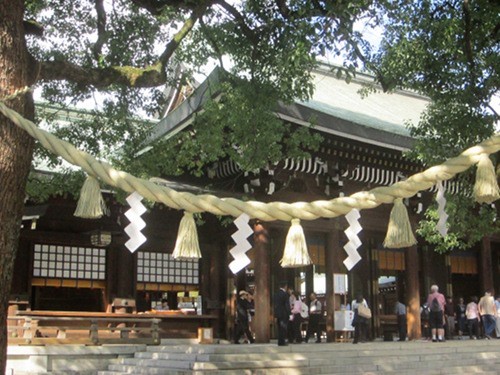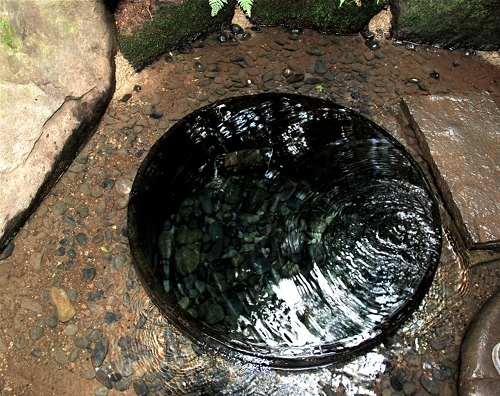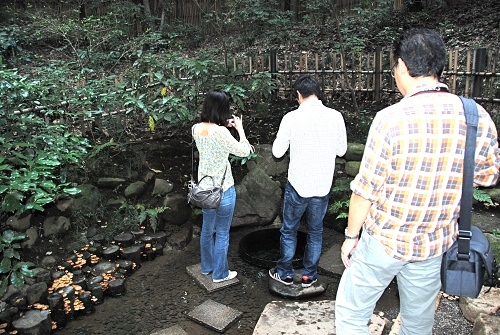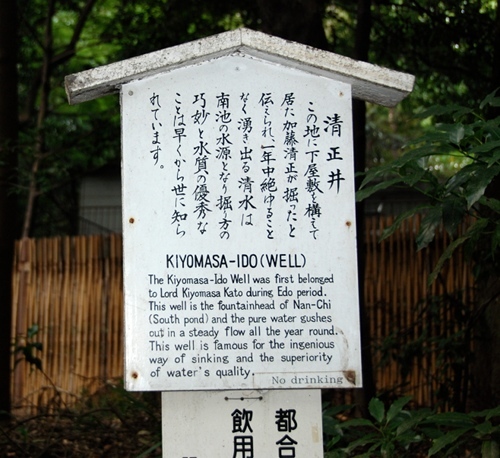Level up your luck on a fashion adventure to Harajuku with a stop at Meiji Shrine's magic wishing well: the Kiyomasa Ido.
On one side of the Harajuku Station, Omote Sando boulevard rolls over a tantalizing landscape of fashion icons: Bulgari, Chanel, Dior, Gucci. Here, fashion's passion is all about looking good in this world.
On the opposite side, posing teens quickly give way to giant Torii gates and old growth pine and cypress leading to Meiji Shrine. There, it's all about looking good in the other world.
In a quiet corner of Meiji Shrine's Outer Garden is a clear spring spilling over a well of gray stone. The little spring has believers lining up for as long as forty minutes for a chance to touch the water and make a wish. Believe it or not, this is the city's number one Power Spot, famous throughout the country for its ability to grant wishes.
'Power Spot' is a catchy new phrase for an ancient concept. These are places of strong spiritual energy Japanese believe can change or enhance luck. Power Spots are found in certain very special Shinto shrines and Buddhist temples, holy objects, trees, stones, springs and mountains.
Tokyo's top Power Spot.
The Kiyomasa Ido wishing well used to be a quiet, word-of-mouth place only the cognoscenti knew. Now, because of visits by celebrities trailing film crews, everyone wants to visit -- especially on a 'lucky day'.
Japanese mix their religions like a Caribbean cocktail. These lucky days are called taian in the Buddhist calendar. No one sees any conflict in using Buddhist holy days to pray at a wishing well in a Shinto Shrine. That's just the way the Japanese roll.
Here's what the locals do. Wait your turn to kneel down and touch the clear, cold water in the well. This is very important to establish a connection with the energy -- or so the mythology goes. Make your wish and send it out on its heavenly flight path. It's all right to take a picture of yourself at the well. In fact, you absolutely must. People believe a little of that luck is carried away in the form of a photo. When the guard is there, he will graciously help.
If it's crowded, don't dawdle. Don't act silly, don't splash in the well and, please, don't slip on the wet stones and fall in.
Japanese also take a picture of the well itself with their cell phones and make it the start-up screen on their phone or other digital devices. That way, every time they open the phone, good luck flows.
That's what I did, and things have been going very well indeed. Knock on wood.
Beautiful Meiji Shrine is already on most tour itineraries. The perfect stop before or after a ramble through Harajuku. Two very different -- but always compatible -- sides of this culture.
The name Kiyomasa dates back to the 1500s, when this was the home of General Kato Kiyomasa. He's the one who excavated the well. Though the grounds changed hands several times, the name stuck. It has never run dry in all those centuries and feeds the fish pond and Meiji's famous Iris Garden.
If you're wondering why Meiji Shrine is where it is, the estate's gardens were a favorite of the Meiji Emperor and Empress. After their deaths, it became consecrated ground and the shrine you see now.
Access: From Harajuku Station's main JR exit, go to the right and into Meiji Shrine through the giant Torii gates. You'll see the entrance to the Outer Gardens on your left, a hundred yards or so in. It's actually the second gate on your left, so don't panic when the first is closed. Pay the 500 yen entrance fee ($5) and follow the signs in English to the Iris Garden and Kiyomasa Ido. No wheelchair access. The garden is open daily from 9 a.m. to 4 or 4:30. Times vary slightly with the season. Meiji Shrine itself opens at sunrise and closes at sunset.
Meiji Shrine website.



